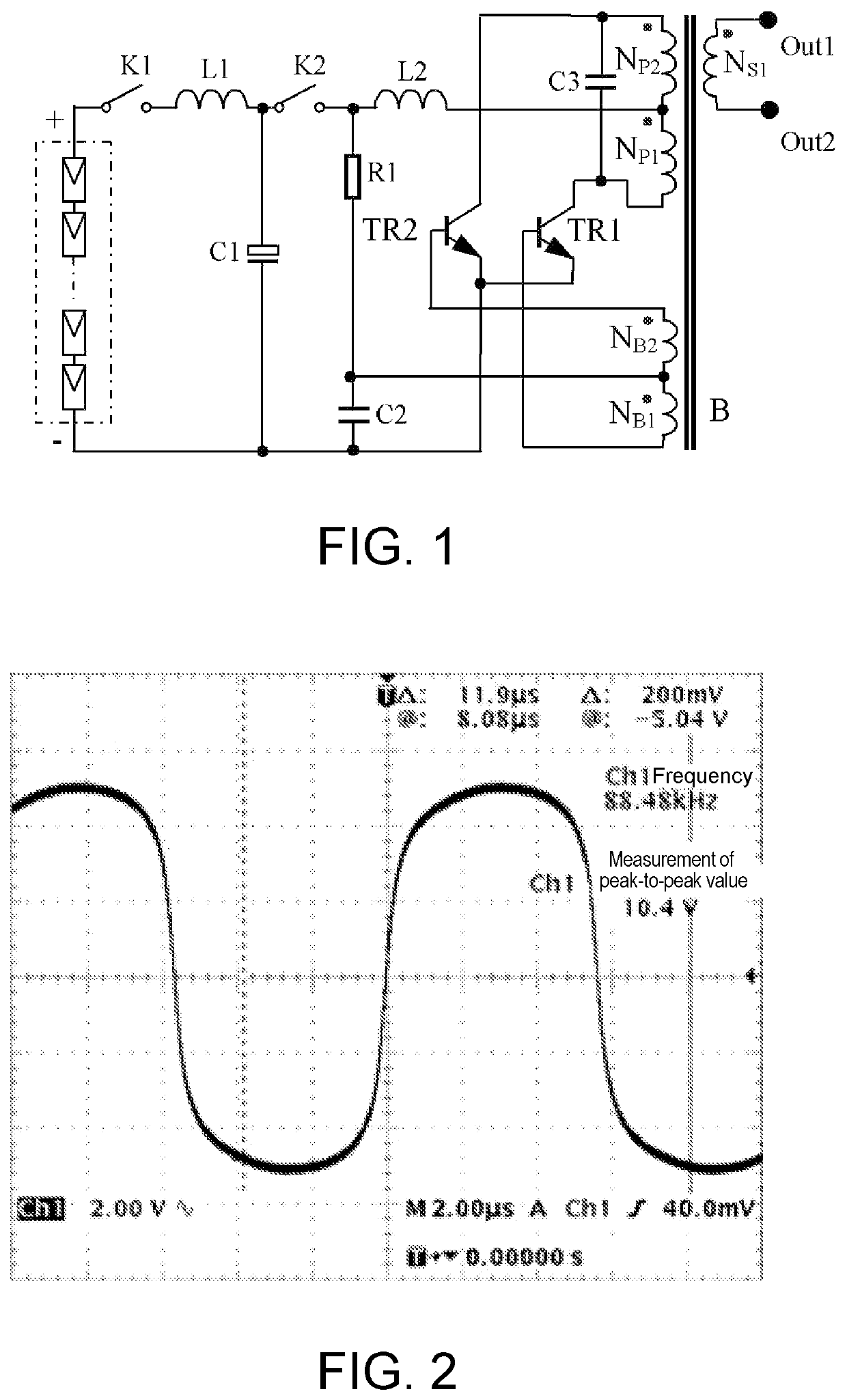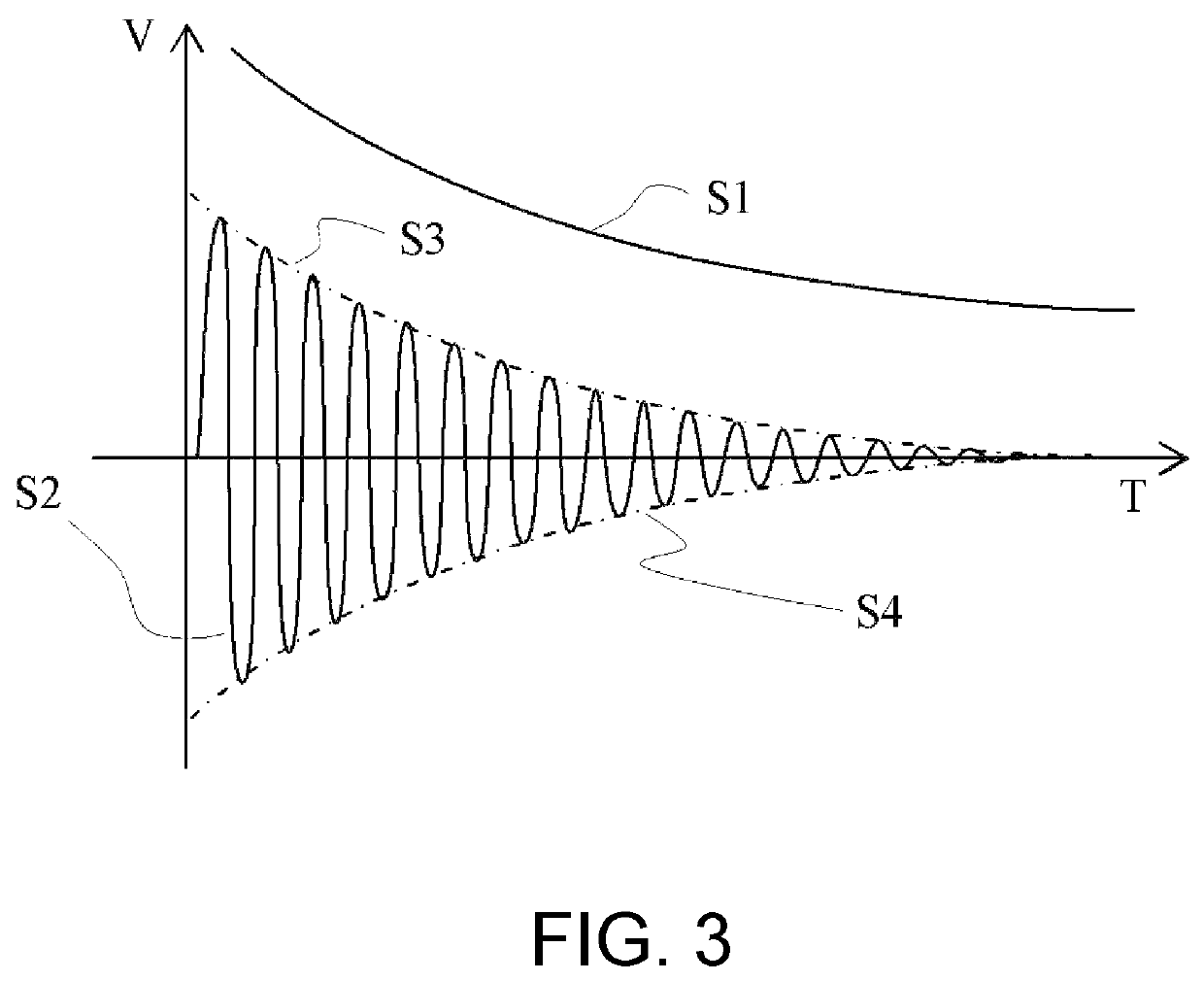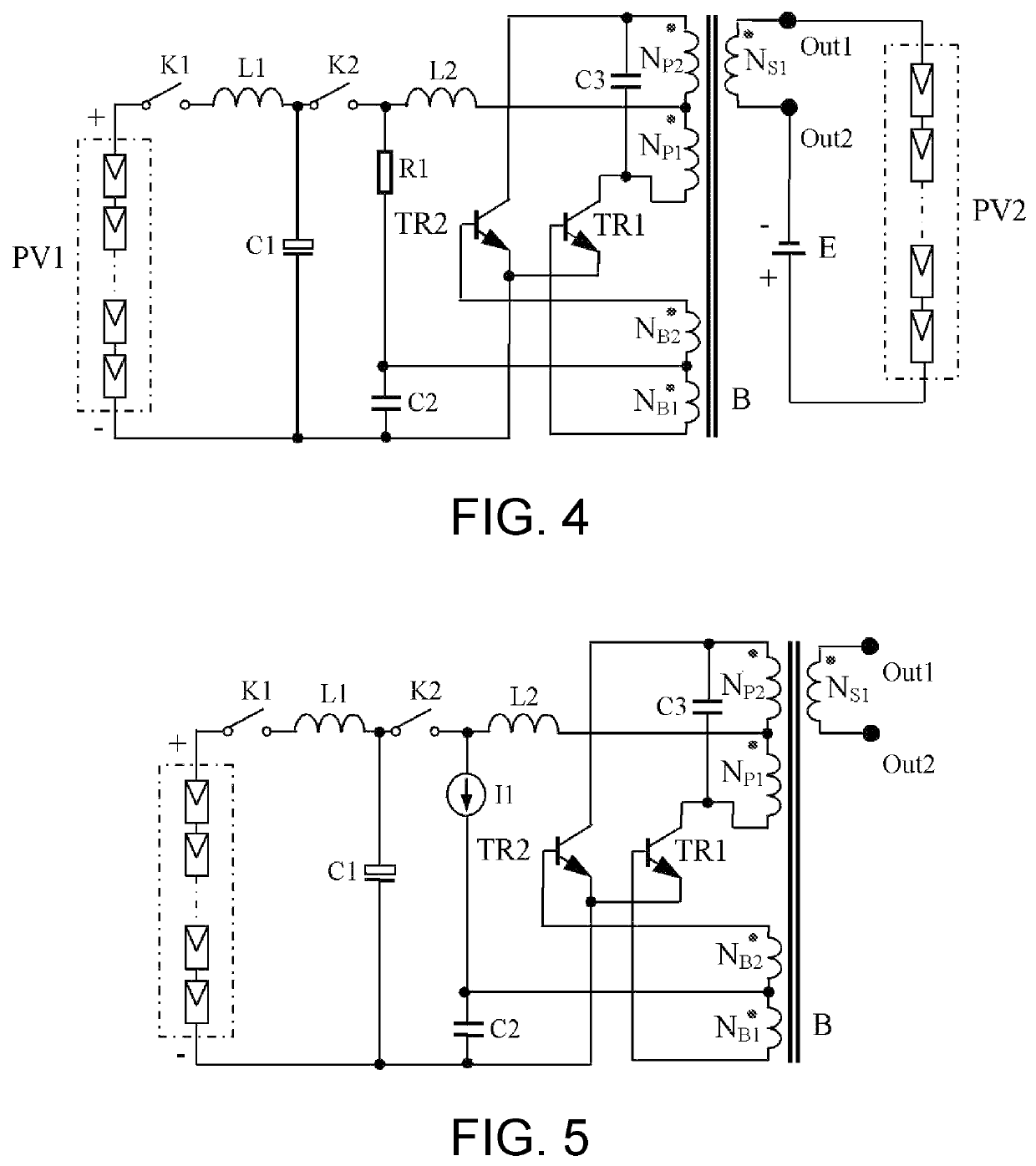Power supply circuit and photovoltaic power generation system comprising same
a power supply circuit and photovoltaic technology, applied in the direction of dc-dc conversion, dc-dc conversion, ac network voltage adjustment, etc., can solve the problems of short circuit current, low fill factor (ff), and components working at high voltage for a long time, and achieve low cost, simple realization, and small radiation to the environment
- Summary
- Abstract
- Description
- Claims
- Application Information
AI Technical Summary
Benefits of technology
Problems solved by technology
Method used
Image
Examples
first embodiment
The First Embodiment
[0057]Please refer to FIG. 1, FIG. 1 is a schematic diagram showing the principle of a power supply circuit according to a first embodiment of the disclosure. The configuration of components and connection relations are as follows:
[0058]The power supply circuit shown in FIG. 1 includes a switch K1, an inductor L1, a capacitor C1, a switch K2, and a CCFL conversion circuit.
[0059]One end of the switch K1 is the positive input terminal of the power supply circuit, the other end of the switch K1 is connected to one end of the inductor L1. The other end of the inductor L1 is simultaneously connected to one end of the capacitor C1 and one end of the switch K2, and the other end of the capacitor C1 is the negative input terminal of the power supply circuit. The positive input terminal of the CCFL conversion circuit is connected to the other end of the switch K2, the negative input terminal of the CCFL conversion circuit is connected to the negative input terminal of the...
second embodiment
The Second Embodiment
[0088]FIG. 4 is a schematic diagram showing the principle of the improved photovoltaic power generation system applied to the power supply circuit according to the second embodiment of the disclosure. Since the equivalent inside the photovoltaic string has a diode connected in series, and in order to improve the activation effect, a set of DC power supply E is connected in series at the output terminal of the power supply circuit, that is, a set of DC power supply E is connected in series with the photovoltaic string. The series connection method is one of the following two:
[0089](1) The negative pole of the DC power supply is electrically connected to the second output terminal of the power supply circuit, the first output terminal of the power supply circuit is electrically connected to the positive pole of the photovoltaic string, and the negative pole of the photovoltaic string is electrically connected to the positive pole of the DC power supply.
[0090](2) T...
third embodiment
The Third Embodiment
[0094]FIG. 5 is a schematic diagram showing the principle of a power supply circuit according to a third embodiment of the disclosure. The third embodiment is different from the first embodiment in that the resistor R1 is replaced with a constant current source, and the current direction is the same. In this way, when the input voltage drops, due to the presence of the constant current source, it is possible to achieve that the current supplied by the CCFL conversion circuit to the bases of the two push-pull triodes TR1 and TR2 is constantly unchanged. Therefore, the input voltage of the power supply circuit can be wider. As mentioned above, when the operating voltage drops from 377V to 60V, since the base current supplied by the constant current source to the triodes TR1 or TR2 is not reduced, the CCFL converter will not stop oscillating so as to adapt to the wide-range terminal voltage of the photovoltaic string. The working principle of this embodiment and its...
PUM
| Property | Measurement | Unit |
|---|---|---|
| voltage | aaaaa | aaaaa |
| voltage | aaaaa | aaaaa |
| length | aaaaa | aaaaa |
Abstract
Description
Claims
Application Information
 Login to View More
Login to View More - R&D
- Intellectual Property
- Life Sciences
- Materials
- Tech Scout
- Unparalleled Data Quality
- Higher Quality Content
- 60% Fewer Hallucinations
Browse by: Latest US Patents, China's latest patents, Technical Efficacy Thesaurus, Application Domain, Technology Topic, Popular Technical Reports.
© 2025 PatSnap. All rights reserved.Legal|Privacy policy|Modern Slavery Act Transparency Statement|Sitemap|About US| Contact US: help@patsnap.com



